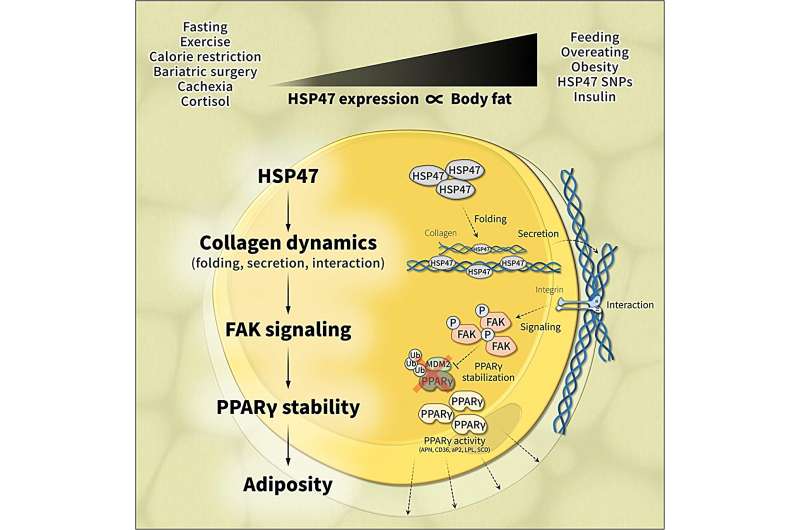This article has been reviewed according to Science X's editorial process and policies. Editors have highlighted the following attributes while ensuring the content's credibility:
fact-checked
peer-reviewed publication
trusted source
proofread
Chaperoning fat storage: The molecular basis of adiposity

Weight gain and weight loss are not as simple as "calories in, calories out," given that countless factors affect body weight. Now, researchers from Japan have identified a gene that may serve as a master regulator of fat storage under a wide range of conditions.
In a study published in Nature Communications, researchers from Osaka University have revealed that this single gene may be the key to body size.
Whether a person is lean or fat depends on a host of factors, from activity levels to food intake, illness, living environment, and more. Family history also clearly plays a role, but the genetic basis of body weight is still poorly understood.
"Fat is a unique tissue that is regulated by various nutritional, hormonal, and molecular factors," says lead author of the study Jihoon Shin. "However, a unified genetic basis for its regulation remains elusive."
To identify genetic factors responsible for fat deposition, the researchers analyzed gene expression data from fat tissue compared with other tissue types. The results showed that HSP47, a collagen-specific molecular chaperone, is a significant determinant of body fat levels.
"HSP47 is expressed at high levels in fat tissue and increases with obesity and greater food intake; in contrast, its expression level decreases with fasting, exercise, calorie restriction, bariatric surgery, and wasting syndrome," explains Iichiro Shimomura, senior author. "In addition, HSP47 expression correlates closely with fat mass, body mass index, waist circumference, and hip circumference."
Importantly, the researchers found that insulin, a hormone associated with fat storage or fat loss, increases HSP47 expression levels; while conversely, glucocorticoids decrease HSP47 expression levels. In addition, high or low HSP47 expression was linked to high or low body fat levels in both humans and mice.
"The findings from our study highlight the significant role that HSP47 plays in determining an individual's amount of body fat normally and in response to various factors such as disease or changing hormone levels," says Shin.
The identification of HSP47 as a key factor influencing fat storage provides a clear genetic basis for overall body fat levels and energy use. Given the central role of HSP47 in this process, it is possible that alterations in this gene could create metabolic disturbances.
More information: Jihoon Shin et al, HSP47 levels determine the degree of body adiposity, Nature Communications (2023). DOI: 10.1038/s41467-023-43080-x

















